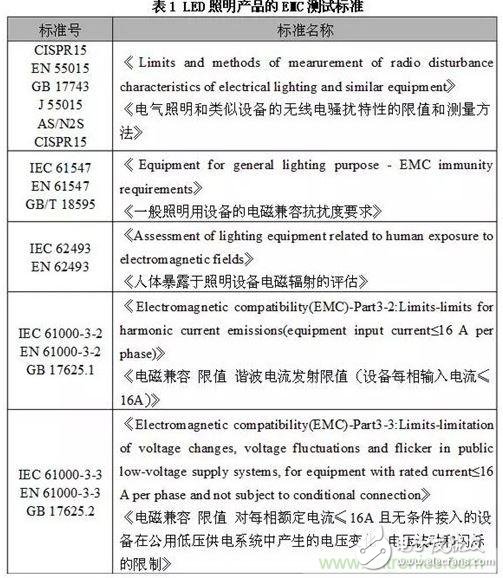According to the special inspection of the market quality inspection, the failure rate of LED lighting products reached 73.9%, among which the unqualified items were mainly concentrated on electromagnetic compatibility test (EMC test) such as harmonic current, surge impact and disturbance voltage. Electromagnetic compatibility (EMC) is an important factor affecting the reliability of LED lighting products. This article will introduce the detection method for everyone.
With its remarkable advantages such as high luminous efficiency, long life, energy saving and environmental protection, LED has gradually established its leading position in the lighting industry, such as indoor and outdoor lighting. Along with the introduction of various national support policies, a large number of manufacturers of LED lighting products have emerged in China, but the quality of LED lighting products has been mixed, which has affected the promotion of LED lighting products to a certain extent. According to the special inspection of the market quality inspection, the failure rate of LED lighting products reached 73.9%, among which the unqualified items were mainly concentrated on electromagnetic compatibility test (EMC test) such as harmonic current, surge impact and disturbance voltage. Electromagnetic compatibility (EMC) is an important factor affecting the reliability of LED lighting products.
1, EMC test standards
At present, there is no EMC test standard for LED lighting products in the world. The current practice is based on the field of application of LED lighting products, and reference is made to implement relevant standards. For automotive LED lighting products, refer to CISPR25 "Limitations and Measurement Methods for Protection of Radio Disturbance Characteristics of Vehicle Receivers", ISO 7637-2 "Transient Conduction of Electrical Vehicles Caused by Conduction and Coupling of Road Vehicles along Power Lines" EMC tests are carried out in accordance with ISO11452 "Test methods for electromagnetic interference components emitted by narrow-band emitted electromagnetic energy for road vehicles". This part of the paper does not discuss this article. The focus of this paper is on the EMC test standards for general-purpose LED lighting products (except for automotive lighting, aerospace lighting, photocopying machines and other special LED lighting equipment), as shown in Table 1.

2, EMC test project
EMC test items for LED lighting products can now be classified into electromagnetic interference (EMI) and electromagnetic sensitivity (EMS). EMI (Electromagne TIc Interference) is an electromagnetic disturbance test that tests LED lighting products that may cause degradation or damage to other things, including equipment, systems, people, animals and plants. EMS (ElectromagneTIc SuscepTIbility) is an electromagnetic sensitivity (immunity resistance) test that tests the immunity of LED lighting products to electromagnetic disturbances such as lightning strikes, ESD static shock tests, and ringing waves.

Rc Battery,New Bright Rc Battery,Rc Battery Pack,Rc Battery Bars
Shenzhen Jentc Technology Co., LTD , https://www.phenyee.com
